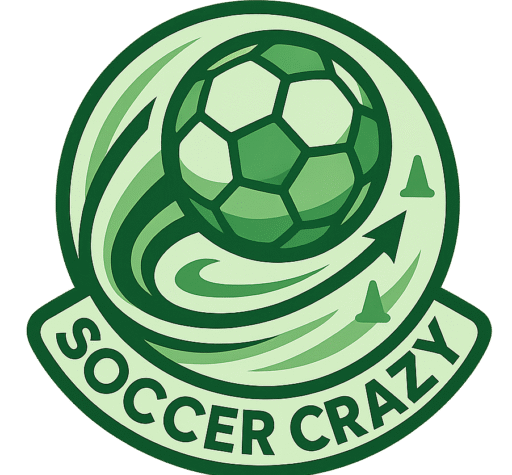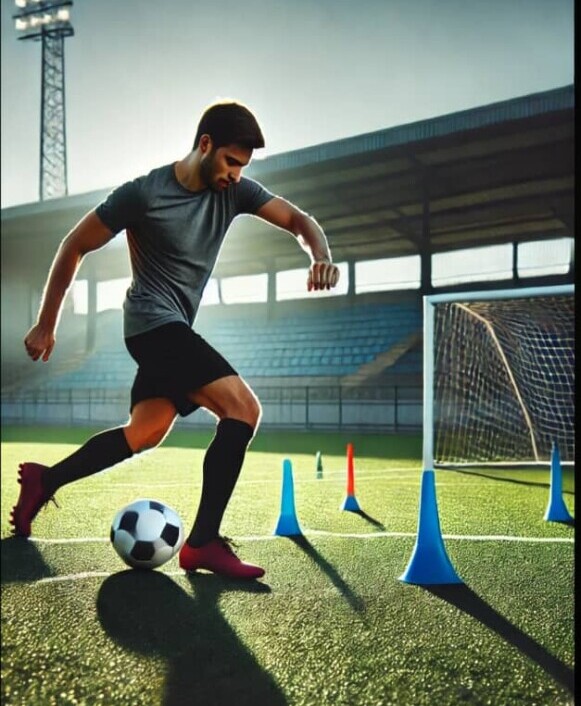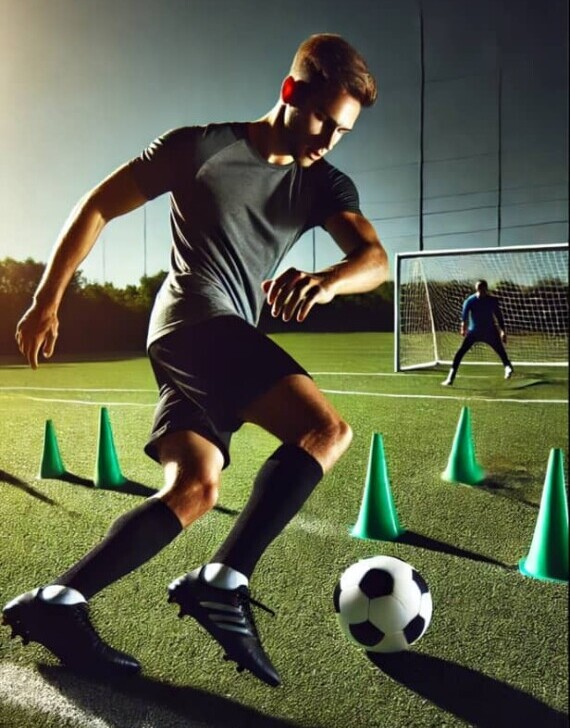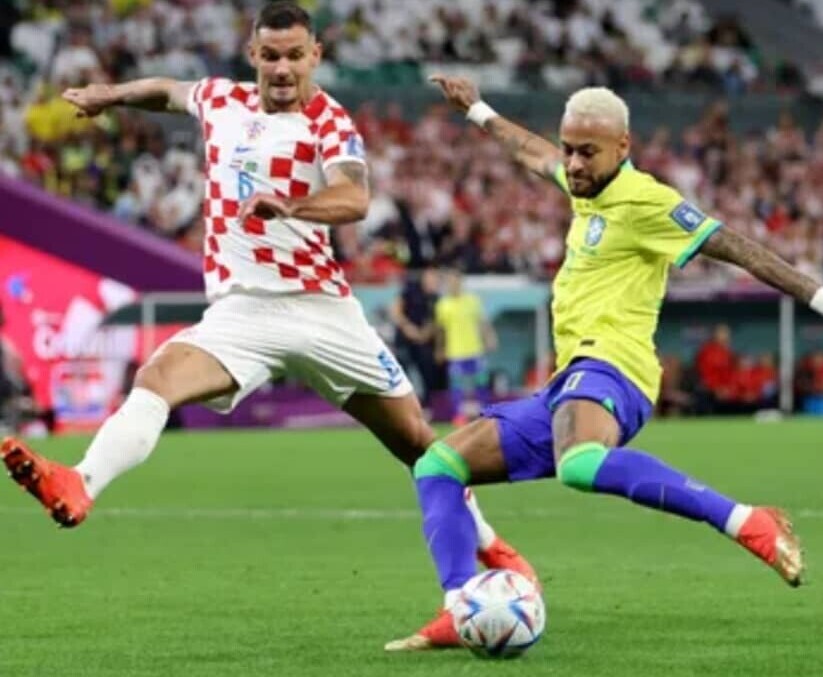Introduction to the Dribble and Shoot Drill:
The Dribble and Shoot Drill is a dynamic exercise that combines dribbling skills with shooting accuracy.
This drill is designed to simulate game scenarios where a player must navigate through defenders and quickly take a shot on goal.
It helps improve ball control, speed, and shooting under pressure, making it an essential part of any soccer training routine.
Setting Up the Drill:
- Equipment Needed:
-
- Soccer ball
- Cones (at least 5-10)
- A goal (full-size or smaller training goal)
- A flat, open space (such as a soccer field or training ground)
- Setup Instructions:
- Place a line of cones leading up to the goal, spaced about 1-2 meters (3-6 feet) apart. The length of the cone line can vary based on available space and player skill level.
- Position the goal at the end of the cone line.
- Ensure the cones are firmly placed to prevent them from moving during the drill.
Executing the Dribble and Shoot Drill:
- Starting Position:
-
- Begin at the first cone with the soccer ball at your feet.
- Stand with a balanced posture, knees slightly bent, and ready to move.
- Dribbling Through the Cones:
- Using Both Feet: Dribble the ball through the cones, alternating touches with the inside and outside of both feet. Focus on maintaining close control and quick changes of direction.
- Close Control: Keep the ball close to your feet with small, controlled touches. This helps in maintaining control while dribbling at speed.
- Sharp Turns: As you navigate through the cones, make sharp turns to simulate maneuvering around defenders.
- Approaching the Shot:
- Head Up: As you approach the final cone, lift your head to locate the goal and assess the best shooting angle.
- Set Up for the Shot: Position the ball slightly ahead of you as you prepare to shoot. This allows you to strike the ball cleanly and with power.
- Taking the Shot:
- Technique: Use proper shooting technique—strike the ball with the laces of your foot for power or the inside of your foot for placement.
- Accuracy: Aim for specific targets within the goal, such as the corners, to improve shooting accuracy.
- Follow Through: Follow through with your kicking leg to ensure a strong and accurate shot.
Advanced Variations:
- Increase Speed:
-
- Gradually increase the speed at which you dribble through the cones while maintaining control. This adds an element of intensity and helps simulate game conditions.
- Weak Foot Shooting:
- Perform the drill using your non-dominant foot for both dribbling and shooting. This helps improve your weaker foot skills.
- Dynamic Defenders:
- Introduce dynamic defenders (cones that move or actual players) to increase the challenge and better simulate real-game scenarios.
- Multiple Shots:
- Set up multiple shooting stations around the goal, each with its own line of cones. This variation helps practice shooting from different angles and positions.
Common Mistakes to Avoid:
- Over-Reliance on Dominant Foot:
-
- Avoid using only your dominant foot. Ensure you’re developing skills in both feet for balanced dribbling and shooting ability.
- Looking Down at the Ball:
- Constantly looking down at the ball can hinder your awareness of the field. Practice keeping your head up to improve field vision.
- Rushing the Shot:
- Don’t rush your shot. Take a moment to set up and aim to improve accuracy.
Benefits of the Dribble and Shoot Drill:
- Improved Ball Control:
-
- Regular practice enhances your ability to control the ball in tight spaces, crucial for navigating through defenders.
- Enhanced Shooting Accuracy:
- Combining dribbling with shooting practice improves your ability to take accurate shots under pressure.
- Increased Confidence:
- Mastering this drill boosts your confidence in dribbling and shooting during actual game scenarios.
Incorporating the Drill into Your Training Routine:
- Warm-Up: Use the dribble and shoot drill as part of your warm-up to get your muscles engaged and ready for more intense training.
- Consistent Practice: Integrate this drill into your regular training routine, aiming for at least 10-15 minutes per session.
- Progress Tracking: Record your progress, noting improvements in speed, control, and shooting accuracy. Challenge yourself to reduce the time taken to complete the drill while maintaining precision.
FAQs
- What is the Dribble and Shoot Drill?
-
- Answer: The dribble and shoot drill involves dribbling the ball through a series of cones or markers and then taking a shot on goal. This drill helps players enhance their dribbling skills, precision, and shooting accuracy.
- Why is the Dribble and Shoot Drill important?
- Answer: This drill is essential for developing a player’s ability to transition smoothly from dribbling to shooting. It enhances ball control, decision-making, and the ability to shoot accurately under pressure.
- How do I set up the Dribble and Shoot Drill?
- Answer: Set up a series of cones in a line or zigzag pattern leading towards the goal. Dribble through the cones using controlled touches and, upon reaching the last cone, take a shot on goal. Adjust the number and spacing of the cones based on the player’s skill level.
- What are the key techniques to focus on during the Dribble and Shoot Drill?
- Answer: Focus on maintaining close ball control while dribbling, using both the inside and outside of your feet. Keep your head up to scan for the goal and defenders. When shooting, focus on technique, aiming for accuracy and power.
- How can I vary the Dribble and Shoot Drill to make it more challenging?
- Answer: To increase the difficulty, reduce the spacing between cones, add more cones, or incorporate defenders to apply pressure. You can also practice shooting with both feet or from different angles and distances.
- What common mistakes should I avoid during the Dribble and Shoot Drill?
- Answer: Common mistakes include taking large touches that are hard to control, not looking up while dribbling, rushing the shot without proper setup, and not following through with the shot. Focus on smooth, controlled dribbling and accurate shooting.
- How often should I practice the Dribble and Shoot Drill?
- Answer: For optimal results, incorporate the dribble and shoot drill into your training routine 2-3 times a week. Consistent practice will help reinforce the skills and improve your overall performance.
- Can the Dribble and Shoot Drill be adapted for team practice?
- Answer: Yes, this drill can be adapted for team practice by setting up multiple dribbling courses and having players compete against each other in relay races or timed challenges. This encourages a competitive spirit and adds variety to the training session.
- What are the benefits of mastering the Dribble and Shoot Drill?
- Answer: Mastering this drill improves your ability to control the ball while dribbling, enhances your shooting accuracy, and boosts your confidence during matches. It also helps in developing better coordination and balance.
- How can younger players benefit from the Dribble and Shoot Drill?
- Answer: Younger players can benefit by developing foundational dribbling and shooting skills early on. This drill helps them understand the importance of close ball control, precision, and accurate shooting, which are essential for their growth as soccer players.
- Are there any specific tips for advanced players practicing the Dribble and Shoot Drill?
- Answer: Advanced players should focus on incorporating more complex moves during the dribbling phase, such as step-overs and feints. They should also practice shooting with both feet and from different positions to simulate game conditions and improve their reaction time.
- How does the Dribble and Shoot Drill improve a player’s overall game performance?
- Answer: By enhancing dribbling precision and shooting accuracy, players can navigate through defenders more effectively, maintain possession under pressure, and create more scoring opportunities. This drill also helps in building muscle memory for better ball-handling and shooting skills during matches.
- What variations of the Dribble and Shoot Drill can be used for different positions?
- Answer: For strikers, emphasize quick, powerful shots after dribbling. Midfielders can focus on longer dribbles and precise passing shots. Defenders can practice dribbling out of the backfield and shooting from distance to improve their overall ball skills and scoring ability.
Conclusion
The Dribble and Shoot Drill is a versatile and effective exercise that combines the crucial skills of dribbling and shooting.
By consistently practicing this drill, you’ll develop superior control, agility, and accuracy, which are essential attributes for any soccer player.
Whether you’re preparing for a match or simply looking to improve your overall game, this drill is an essential component of your training arsenal.
If you need further clarification on you have any questions, please leave them in the comment section below and I promise to get back to you.
Happy training.




This is a great breakdown of the Dribble and Shoot Drill! I love how it simulates real-game situations where players need to transition quickly from dribbling to shooting. One question though: when working with younger players, how would you recommend balancing speed and control, especially as they may rush through the cones without maintaining accuracy? Also, are there any additional tips for improving shooting technique when the player is under pressure? Thanks for sharing such detailed insights—I’ll definitely be incorporating this into my training sessions!
Thank you so much for your kind words!
I’m really glad you found the article helpful and that you’re excited to incorporate the drill into your training sessions.
You’re absolutely right—balancing speed and control can be tricky, especially with younger players who are eager to rush through the drill.
For balancing speed and control, I recommend starting slow and focusing on precision first. Encourage players to go at a comfortable pace initially, ensuring they keep close control of the ball through the cones.
Once they’re able to complete the figure eight smoothly, they can gradually increase their speed over time.
A good way to help with this is to set specific objectives—like completing the drill accurately a certain number of times—before adding speed as a challenge.
You can also remind them that small, frequent touches will help them maintain control, even as they start to go faster.
As for improving shooting under pressure, one of the best ways is to introduce small variations in the drill.
For example, you can add a time limit for each repetition or have another player or coach apply light defensive pressure right before the shot.
This helps players practice staying calm and making quick decisions. Another useful tip is to teach them to focus on their shooting form, even when fatigued or rushed—good technique goes a long way in maintaining accuracy under pressure.
Encourage them to aim for smaller targets within the goal during practice to build precision and confidence.
I’m excited to hear how this drill works for you! Please feel free to share your experience or any adjustments you make along the way.
Wishing you and your players the best with your training!